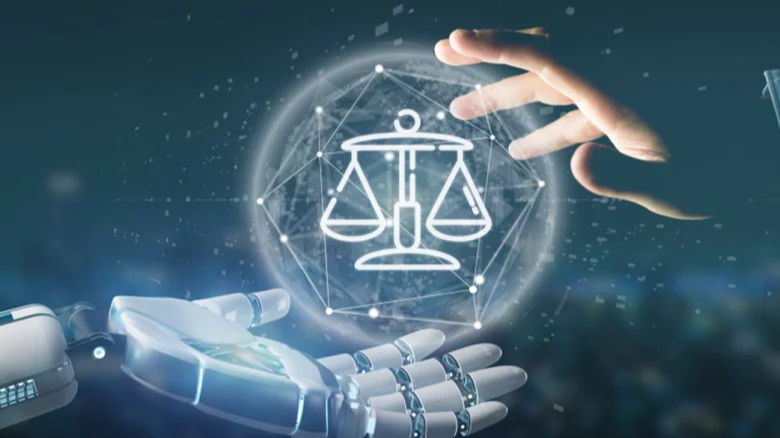SYLLABUS
GS-2: Structure, organization and functioning of the Executive and the Judiciary Ministries and Departments of the Government; pressure groups and formal/informal associations and their role in the Polity
GS-3: Awareness in the fields of IT, Space, Computers, robotics, nano-technology, bio-technology and issues relating to intellectual property rights
Context: The Centre for Research and Planning (CRP) of Supreme Court of India has released a landmark White Paper titled “Artificial Intelligence and the Judiciary” outlining how artificial intelligence can enhance judicial efficiency while upholding constitutional values.
Role of Artificial Intelligence in Judiciary
- Case management: AI can help with case scheduling, a key step in reducing backlogs and speeding up case processing.
- Risk assessment: AI can analyze historical judgments to offer insights into potential case outcomes and help with risk assessments.
- Document processing: AI can automate the filing of court documents and analyze large volumes of legal data faster than manual methods.
- Operational cost efficiency: By automating administrative tasks, AI can help lower operational costs for the courts.
India’s Emerging Judicial AI Ecosystem
- SUPACE: The Supreme Court Portal for Assistance in Court Efficiency aids judges by automating document extraction, case summarization, and identifying relevant legal references to boost research efficiency.
- SUVAS: The Supreme Court Vidhik Anuvaad Software translates judgments into 19 Indian languages, ensuring linguistic inclusivity for non-English speaking litigants.
- TERES: The Transcription of Electronic Record and Speech system offers real-time courtroom transcription during Constitution Bench hearings, enhancing transparency and archival accuracy.
- LegRAA: The Court’s generative AI tool, trained on Indian case law, supports legal research while reducing dependency on external AI systems, ensuring domain-specific accuracy.
- AI-Enabled e-Filing System: AI-driven defect detection in e-filing minimizes procedural errors, streamlining case submissions and cutting administrative delays.
Vulnerabilities in AI Integration
- Accuracy Risks and Hallucinations: AI systems may generate false case citations or incorrect legal interpretations, causing misinformation in judicial decisions and undermining judicial reliability.
- Deepfake Evidence Manipulation: Advanced synthetic media could alter oral and documentary evidence, threatening the integrity of due process and fair trial standards.
- Algorithmic Discrimination: Biases within AI training data can perpetuate social inequalities and produce discriminatory outcomes in judicial rulings, risking fairness and equality before the law.
- Data Protection and Confidentiality Concern: Use of sensitive case data in non-secure or foreign AI platforms raises serious threats to privacy and judicial confidentiality, potentially exposing critical information.
- Dependency Overreach: Excessive dependence on automated AI tools may erode human judicial judgment and compromise judicial independence, raising concerns over the proper role of human discretion.
Forward-Looking Strategy
- Human Authority as the Core of Judicial Decision-Making: AI serves only as an assistive tool, while judges retain full authority over all decisions. Every AI-generated output requires human verification, ensuring that judicial reasoning stays entirely human-led.
- Clear Boundaries on AI’s Functional Scope: AI should remain confined to administrative and support functions like translation, transcription, and document handling without substituting judicial discretion or affecting core reasoning unless a judge explicitly reviews it.
- Institutional Oversight to Ensure Ethical Compliance: Creation of AI Ethics Committees provides a governance layer to monitor deployment, conduct audits, handle grievances, and enforce accountability in the use of judicial AI systems.
- Capacity Building Across the Legal Ecosystem: Training judges, lawyers, and court staff in AI literacy strengthens institutional readiness, reduces misuse, and fosters informed, responsible adoption.
- Open-Source and Multilingual AI for Inclusive Justice: The emphasis on open-source, multilingual tools supports equitable access, assists litigants across linguistic backgrounds, and aligns with the constitutional commitment to accessible justice.
Sources:
Just Ai
New Indian Express

